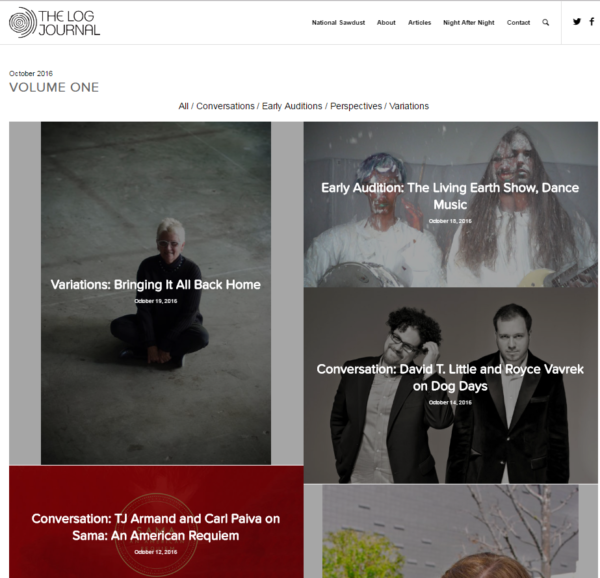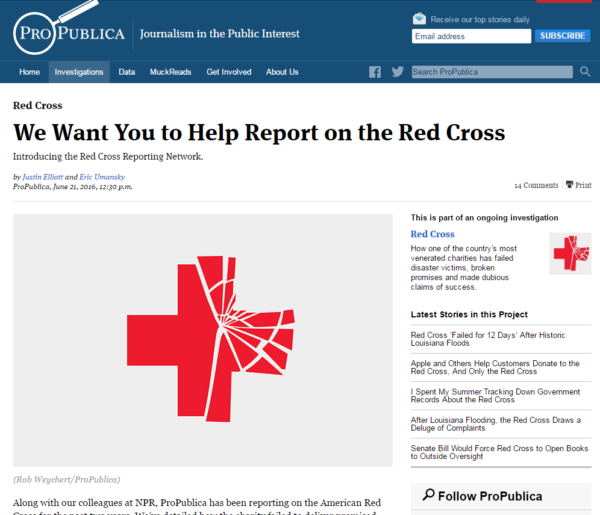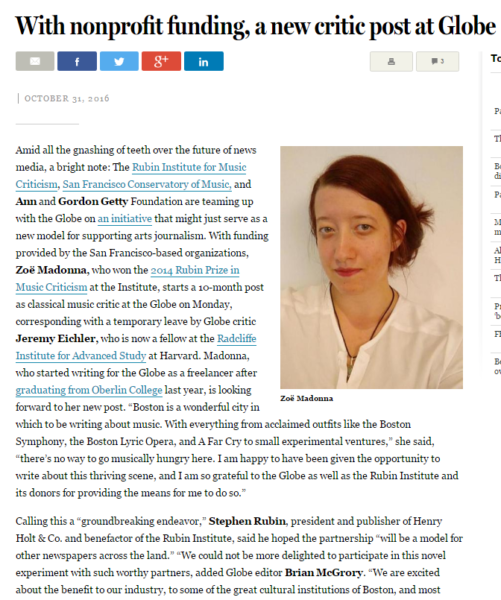If you can’t beat them, join them. Unsatisfied with years of declining newsroom resources, many nonprofits take matters into their own hands and develop journalistic enterprises directly within their organizations. Through these projects and staff positions, nonprofits can cover stories that might otherwise be lost.

The Natural Resources Defense Council (NRDC)
Through its support of OnEarth, NRDC funds a wide array of original reporting on environmental issues, with features like “Species Watch” and “Art for Earth’s Sake.” Although there is coverage of NRDC’s work (such as “View from NRDC,” “Dispatches,” “Fieldwork,” and “From NRDC”) the quarterly magazine and daily online outlet maintains a church-and-state style separation from the 501c(3)’s staff. Only NRDC’s director of communications (who also serves as the magazine’s publisher) can see content prior to publication.

National Sawdust
This “artist-led…place for exploration and discovery” made a big splash when it opened in Williamsburg last fall. This season, it’s brought on music critic Steve Smith (formerly of The Boston Globe, The New York Times, and Time Out New York) to oversee The Log Journal. The online outlets covers artists appearing at National Sawdust as well as the activities of outside venues and artists.
Here’s how Smith contextualized the project:
“At a time when the traditional mass media face severe challenges merely in order to survive, ones we’d barely begun to conceive even a few years ago, new ventures and venues have to rise up to address cutbacks elsewhere, and to continue covering the arts and artists on a granular level. Our new journal initiative is not meant to be an alarmed response to that changing status quo, but rather to foster awareness of the brilliant abundance of fresh artistic expression that surrounds us all…”

The ACLU of Michigan
When the Flint water crisis broke out, it struggled to attract media attention. Using a grant from the Ford Foundation, the local chapter of the American Civil Liberties Union hired veteran reporter Curt Guyette (formerly of the Metro Times, a Detroit alt-weekly) as its first ever in-house investigative reporter. Guyette’s stories for the ACLU’s Michigan Democracy Watch Project began to uncover the horrifying truth behind the city’s lead-contaminated drinking water and to be noticed by major national media outlets. Currently, Michigan is the only ACLU chapter to have an investigative reporter on staff.

ProPublica
“The best way to dig into the reality of the Red Cross is to report from places that have found themselves in need of the group’s aid. And to do that takes more than one news organization in Manhattan.”
That’s the rationale behind the Red Cross Reporting Network. Claiming that “the charity failed to deliver promised relief following Superstorm Sandy in 2012, the Haiti earthquake in 2010, and even more modest disasters like last year’s fires in California and the recent flooding in Mississippi,” ProPublica enlisted an army of journalists this summer to serve as watchdogs in their communities. In return ProPublica provides the journalists with an enhanced range of sources including many documents compiled through FOIA requests.

The San Francisco Conservatory of Music, the Rubin Institute for Music Criticism, and the Ann and Gordon Getty Foundation
This just in: Today, The Boston Globe announced a pilot program with the San Francisco Conservatory of Music, the Rubin Institute for Music Criticism, and the Ann and Gordon Getty Foundation. The three nonprofit organizations will cover a new staff role for Zoë Madonna as music critic. While Stephen Rubin of the Rubin Institute told the Boston Globe that he lauded the partnership as “a model for other newspapers across the land,” it has raised some eyebrows about journalistic independence.